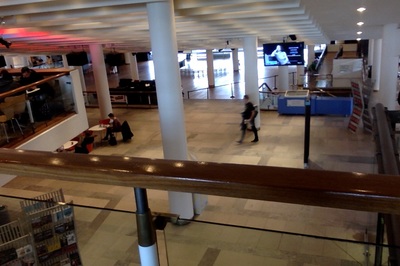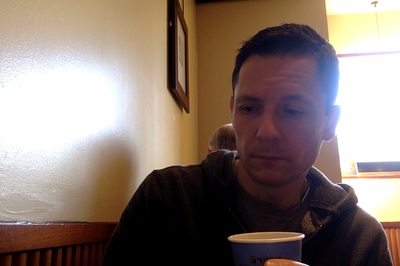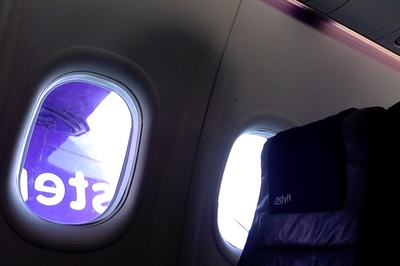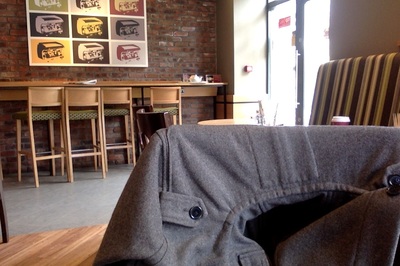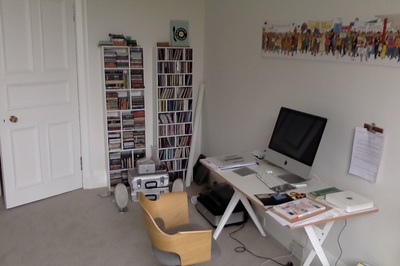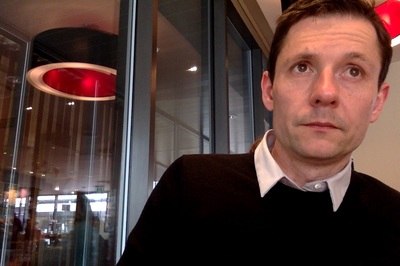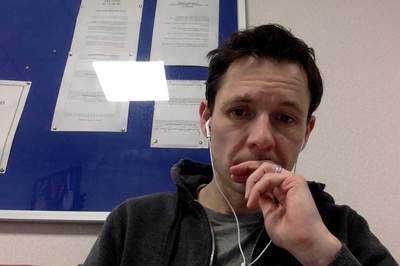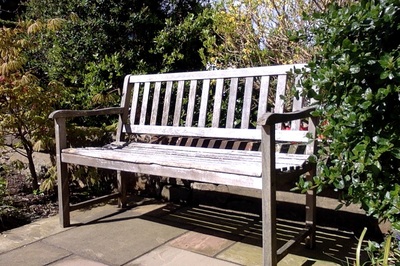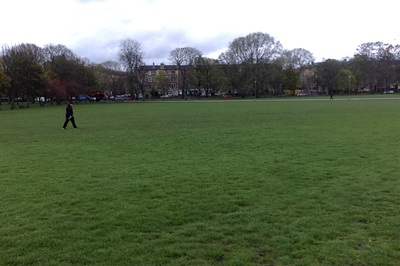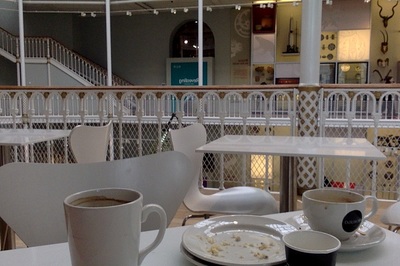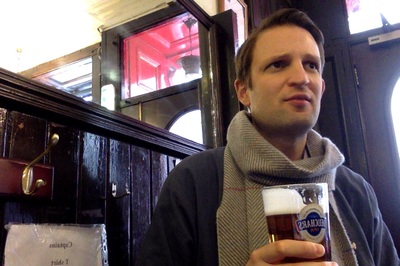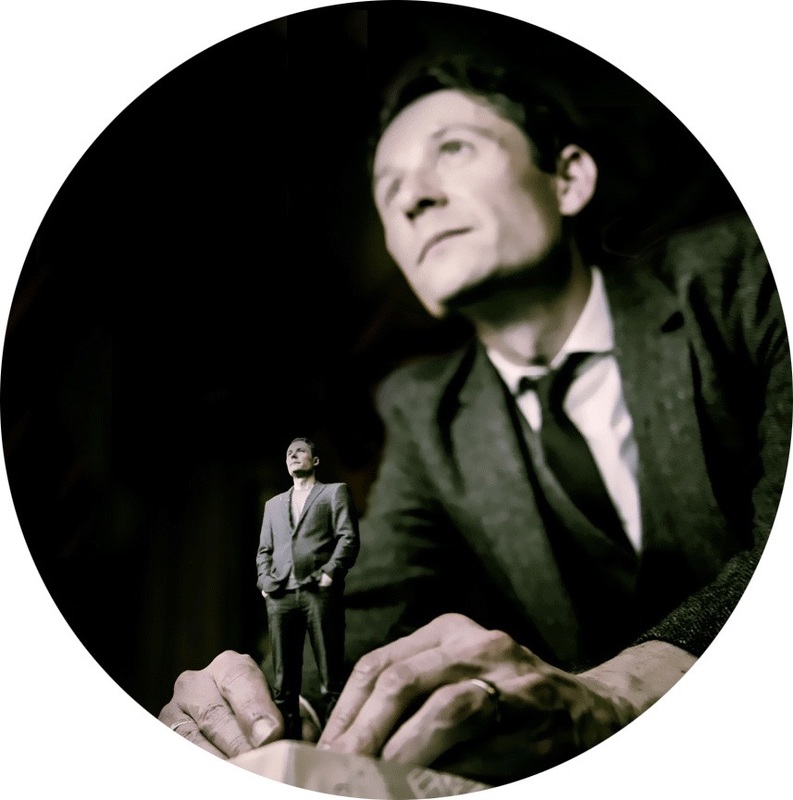|
Some pictures from the last few weeks, captured using the camera on my laptop. On each occasion I was reading, writing or discussing my research with a colleague. In each instance I was situated in a location beyond the physical boundary of university campus.
The gallery doesn’t capture every instance or location where I was studying beyond the physical boundaries of the university. It wasn’t always convenient or appropriate to capture my surroundings while on other occasions I didn’t have my laptop. I also decided that nobody needed to see those private moments where I was working intimately with the literature in my bed at night. This gathering of images is intended as a critical response to the following email I received from the University:
I am interested in this idea of being ‘away from the university’ as it picks up on ideas that emerged from research I undertook a few years ago with Sian Bayne and Michael Sean Gallagher where we investigated notions of space and place amongst online distance students, including how they understood and related to their institution (Bayne et al. 2013). Our research was carried out against a backdrop of the growing strategic and pedagogic interest in the learning that takes place beyond the physical campus, whether through taught Masters programmes, Massive Open Online Courses or other modes of delivery.
One of our key arguments was that in a networked world, where learning increasingly takes place in digital environments, we need to move beyond conceptualisations of the university ‘as a bounded, stable place – a static ‘container’ within which education takes place.’ Drawing on data generated through multimodal postcards submitted by online distance students, and influenced by the work of Sheller and Urry around new mobilities (2006) we instead proposed that the university is enacted in multiple and complex ways. We also looked to the work of Edwards et al. around mobilities and moorings to argue that when teaching and learning takes place within digital online environments, the university becomes characterised by ‘flux and flows rather than simple bounded space’ (2011, p.153). While our research focused on ‘distance’ learners, the distinction between students who attend classes within the university's physical buildings and those who do not, is becoming increasingly blurred. In this context, the notion of being ‘away from the university’, is more complex than being physically located beyond the perimeter of the campus. Looking at the different images in my gallery, I am simultaneously situated outside the university’s real estate whilst intensely enacting ‘being at university’. In this way perhaps we can see the university less as a container of lecture theatres and laboratories and instead as a performance that is played out across cafes, in hospital waiting rooms, in airport departure lounges, in transit and in the home (as well as in university’s own buildings). A second point I would make, again developing an idea that emerged from my research with Sian and Michael, is that the phrase ‘away from the university’ unintentionally deprivileges the learning that takes place beyond the campus. Without proposing that it was the suggested meaning of the email I received, or reflective of the University’s position more generally, the notion of being away suggests that the learning which takes place off campus is somehow ‘other’ to what happens in the library, studios, tutorial rooms and other teaching spaces. We argued that the ‘distance education' label could be seen to have the same effect in the way it proposed that learning undertaken away from the campus is defined through its difference to the conventional, established scholarly pursuits that are followed within the university’s boundaries. In gathering together these images and ideas I have sought to make the point that within a networked educational landscape where we are increasingly looking to the possibilities of blended learning, fully online taught programmes and distance PhD provision, we need to think newly and creatively about what it means to be ‘on a course’ and ‘at the university’ (or indeed, away from the university).
Michael Sean Gallagher, Sian Bayne and I have written about the Sounded Spaces of Online Learners, which will appear as a chapter in Place-Based Spaces for Networked Learning (Routledge) due to be published this August.
References:
Edwards, R., Tracy, F. & Jordan, K. (2011). Mobilities, moorings and boundary marking in developing semantic technologies in educational practices. Research in Learning Technology, 19(3), 219‐232 Bayne, S, Gallagher, MS & Lamb, J 2013, 'Being ‘at’ university: the social topologies of distance students' Higher Education., 10.1007/s10734-013-9662-4 Sheller, M. & Urry, J. (2006). The new mobilities paradigm. Environment and Planning A, 38, 207‐226.
Post-script
Since sharing this blog post earlier today (Monday 9 May) I've had a couple of responses on Twitter from fellow PhD students. I'm not alone.
2 Comments
FYI - rec'd an email from your acct. Since I live in America, have no idea who you are, have no affiliation with anything you are doing, it appears to be spam. Either you sent it maliciously, or someone hacked your account. The email contains a zip file which I have not and will not open. Just thought I would let you know.
Reply
14/4/2018 01:36:49
Ishq Pakeezah Zee Tv Serial Online All Episodes in HD http://url.za.com/a04it , Watch Full Episodes of Star Plus, colors TV, Zee TV, Sony TV.http://ishqpakeezah.com/author/zeetv/
Reply
Leave a Reply. |
Search categories
All
I am a Lecturer in Digital Education (Education Futures), within the Centre for Research in Digital Education at The University of Edinburgh.
@james858499 [email protected] |
